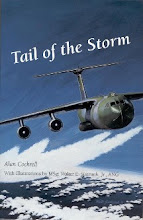The route going east out of Los Angeles usually gives us a clear view of Rogers dry lake northeast of Palmdale. It's easy to see the big runway there. Part asphalt, part dry lake bed, it extends miles into the lake bed's interior. North of the runway you can make out the ramp, hangars and buildings of Edwards AFB, the famous USAF Flight Test Center where Chuck Yeager and others pioneered the jet and rocket ages.
Whenever I see Edwards I always think of someone else, not Chuck and his test pilot peers. I think of a virtually unknown and ill-fated young Texan named Lieutenant Barty Brooks. Brooks made a valuable contribution to aviation. He undoubtedly save many lives, yet his own life ended in what has become one of military aviation's most storied crashes, the video images of which be came a part of several movies. But Lt. Brooks didn't die the way most people assume he did.
came a part of several movies. But Lt. Brooks didn't die the way most people assume he did.
The year was 1956. The F-100 Super Saber, the USAF's first supersonic fighter, was brand new and it had some dangerous handling characteristics that could get you into deep trouble.
Brooks and the other three members of the four-ship flight that took off that morning from Palmdale, where the Super Saber was built, were all new to the jet. They were members of the 1708th Ferrying Wing at Kelly AFB, Texas, which was their destination. Right after liftoff Brook's leader looked at him and saw his nosewheel cocked 90 degrees. He radioed Brooks and told him to keep his gear down. Brooks and his leader decided to put the Saber down on Edward's long runway. They declared an emergency and requested the runway be foamed in case the nose gear collapsed.
A flight test was scheduled that morning at Edwards and camera crews were setting up their equipment at two different locations near the runway. The cameramen heard the sirens and saw the two Super Sabers coming. They turned their cameras to the oncoming aircraft. If you have ever seen the movies Jet Pilot, The Hunters, X-15, or the McConnell Story you know what they captured on film.
The inexperienced Brooks got too low on his approach and the runway supervisory officer advised him to pull up. Brooks did this, adding power as he raised his nose ever higher, but his airspeed continued to decrease. Realizing he was in deep trouble he lit his afterburner, but the sudden burst of power forced his nose almost to the vertical position while his forward momentum carried him wobbling, weaving and teetering down the runway only only a few feet above it. The Saber was literally standing on the blast of its afterburner. Ejection was not an option because zero-zero ejections systems (zero airspeed and/or zero altitude) had not yet been invented.
After about 20 seconds, which must have seemed an eternity to Brooks, the jet decided to die, not fly. It rolled off on a wing and smashed into the ground in a horrific fireball. Poor Brooks did indeed enter eternity, but not how you think if you watch the film. Watch it now on these links before reading on: Saber Dance. Also in color (from one of the movies): Saber Dance.
If you thought there was no way anyone could survive that crash and fire, you thought wrong. What the film didn't show was the jet's nose and cockpit separating intact and rolling away from the fireball. When the rescuers reached it they found Brooks still strapped in the cockpit and apparently unharmed. Yet he was dead. When they unhooked his oxygen mask vomit poured out. The man had drowned in his own puke.
So how did Brook's crash benefit fighter aviation? No doubt he would not have chosen to demonstrate the deadly Saber Dance—as it has come to be known—but in doing so on film, tens of thousands of military pilots, including yours truly, watched him in training classes. We got queasy and winced. Various imprecations, exclamations and the names of a few deities fell from our lips. We understood then what they had told us about getting swept wing jet aircraft into a low altitude, high angle-of-attack regime. And we wouldn't forget it.
The Saber Dance has gone down in aviation folklore as well as history. It has been told again and again in hangars, classrooms and bars. Poems and songs have been written about Brooks' nightmarish ride, but few know his name and fewer still know the real reason for his inglorious demise. What a story he could tell if only he had kept his breakfast down.
From an old fighter pilot bar song:
Oh, don't give me a one-double-oh,
to fight against friendly or foe.
That old Saber Dance made me crap in my pants.
Oh, don't give me a one-double-oh.
We owe Barty Brooks an honorable place in aviation history. He left us all safer because of his fatal waltz with the Saber.
Whenever I see Edwards I always think of someone else, not Chuck and his test pilot peers. I think of a virtually unknown and ill-fated young Texan named Lieutenant Barty Brooks. Brooks made a valuable contribution to aviation. He undoubtedly save many lives, yet his own life ended in what has become one of military aviation's most storied crashes, the video images of which be
 came a part of several movies. But Lt. Brooks didn't die the way most people assume he did.
came a part of several movies. But Lt. Brooks didn't die the way most people assume he did. The year was 1956. The F-100 Super Saber, the USAF's first supersonic fighter, was brand new and it had some dangerous handling characteristics that could get you into deep trouble.
Brooks and the other three members of the four-ship flight that took off that morning from Palmdale, where the Super Saber was built, were all new to the jet. They were members of the 1708th Ferrying Wing at Kelly AFB, Texas, which was their destination. Right after liftoff Brook's leader looked at him and saw his nosewheel cocked 90 degrees. He radioed Brooks and told him to keep his gear down. Brooks and his leader decided to put the Saber down on Edward's long runway. They declared an emergency and requested the runway be foamed in case the nose gear collapsed.
A flight test was scheduled that morning at Edwards and camera crews were setting up their equipment at two different locations near the runway. The cameramen heard the sirens and saw the two Super Sabers coming. They turned their cameras to the oncoming aircraft. If you have ever seen the movies Jet Pilot, The Hunters, X-15, or the McConnell Story you know what they captured on film.
The inexperienced Brooks got too low on his approach and the runway supervisory officer advised him to pull up. Brooks did this, adding power as he raised his nose ever higher, but his airspeed continued to decrease. Realizing he was in deep trouble he lit his afterburner, but the sudden burst of power forced his nose almost to the vertical position while his forward momentum carried him wobbling, weaving and teetering down the runway only only a few feet above it. The Saber was literally standing on the blast of its afterburner. Ejection was not an option because zero-zero ejections systems (zero airspeed and/or zero altitude) had not yet been invented.
After about 20 seconds, which must have seemed an eternity to Brooks, the jet decided to die, not fly. It rolled off on a wing and smashed into the ground in a horrific fireball. Poor Brooks did indeed enter eternity, but not how you think if you watch the film. Watch it now on these links before reading on: Saber Dance. Also in color (from one of the movies): Saber Dance.
If you thought there was no way anyone could survive that crash and fire, you thought wrong. What the film didn't show was the jet's nose and cockpit separating intact and rolling away from the fireball. When the rescuers reached it they found Brooks still strapped in the cockpit and apparently unharmed. Yet he was dead. When they unhooked his oxygen mask vomit poured out. The man had drowned in his own puke.
So how did Brook's crash benefit fighter aviation? No doubt he would not have chosen to demonstrate the deadly Saber Dance—as it has come to be known—but in doing so on film, tens of thousands of military pilots, including yours truly, watched him in training classes. We got queasy and winced. Various imprecations, exclamations and the names of a few deities fell from our lips. We understood then what they had told us about getting swept wing jet aircraft into a low altitude, high angle-of-attack regime. And we wouldn't forget it.
The Saber Dance has gone down in aviation folklore as well as history. It has been told again and again in hangars, classrooms and bars. Poems and songs have been written about Brooks' nightmarish ride, but few know his name and fewer still know the real reason for his inglorious demise. What a story he could tell if only he had kept his breakfast down.
From an old fighter pilot bar song:
Oh, don't give me a one-double-oh,
to fight against friendly or foe.
That old Saber Dance made me crap in my pants.
Oh, don't give me a one-double-oh.
We owe Barty Brooks an honorable place in aviation history. He left us all safer because of his fatal waltz with the Saber.
New information added 10/05/2009: Lt. Brooks did not die from inhaling vomit. The accident report shows he died instantly of impact injuries. (The vomit story has been circulating for over 50 years.)
I researched this story more thoroughly. It will appear in the September 2011 issue of Aviation History Magazine.
I researched this story more thoroughly. It will appear in the September 2011 issue of Aviation History Magazine.




If you ever get a chance pop, snap some pictures of that lake bed and Edwards. I would like to see them.
ReplyDeleteIn aviation, there have been many 'Sabre Dances' and there shall be more to follow. We all pray they teach us about our noble profession, and in the end, save many lives.
ReplyDeleteEdwards Air Force Base used to be called Murock Air Base during WW II. My Dad learned to fly B-24's out there and my oldest sister was born there in a Quonset hut, called Medical on a day when it was 100+.
Most of the wives of the airmen soon to be shipped out were pregnant, ans spent their afternoons pool side, where the Base OB GYN Doc would sit and talk to them about how they were doing a couple of times per week. He claimed it cut down on his need to have office visits.
John
I have done some deeper research into this story and found that the vomit in the oxygen mask cause of death is a myth. Lt. Brooks was killed instantly by mass trauma to the head and body.
ReplyDelete